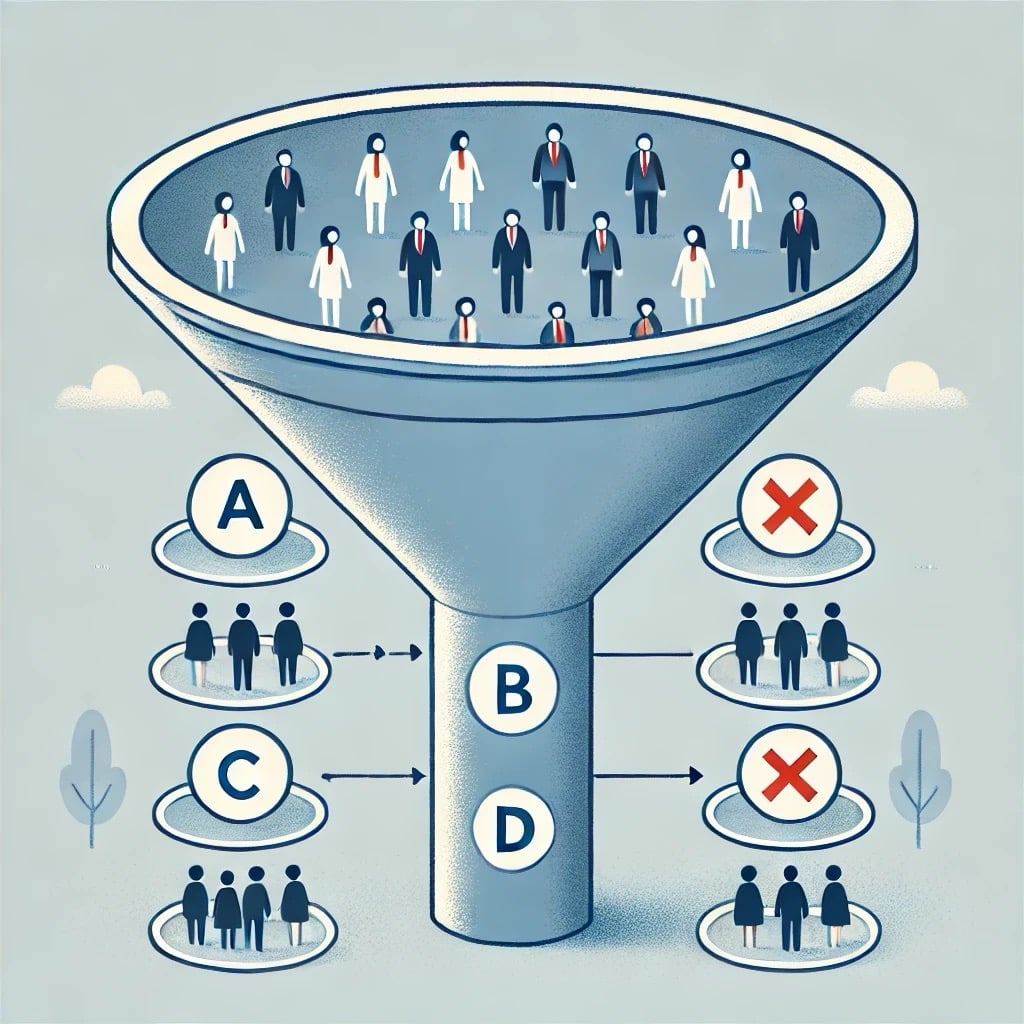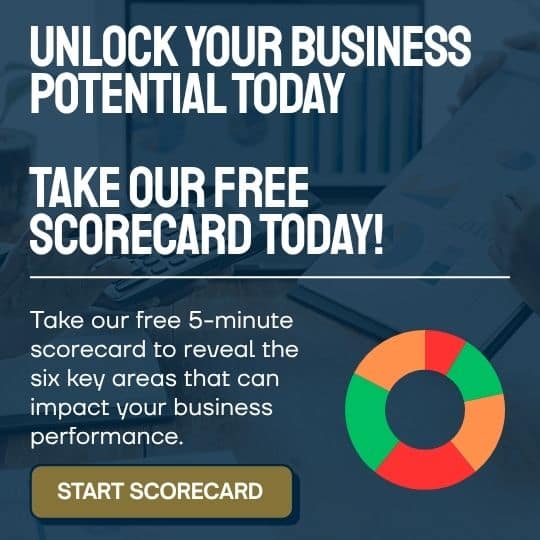Let’s be real—running a business means juggling a hundred things at once. You’re the leader, the fixer, the planner, the one everyone turns to. So when new clients come knocking, it feels natural to say yes. More clients, more money… right?
Not necessarily. Some clients are great. Others? Not worth the time or stress. If you keep working with the wrong ones, you’ll feel stuck—and your business growth will stall without you even noticing.
That’s why it’s so important to get clear on who you should actually be working with—and who you need to let go.
What’s the ABCD Client Model?
It’s a simple tool to help you sort your clients into four groups. No fancy spreadsheets required—just honest answers.
A = Awesome
These clients just get it. They value what you do, they pay on time, they’re enjoyable to work with, and they often send referrals. You’d happily work with them all day.
B = Basic
These ones are fine. They don’t light your fire, but they’re consistent, pay their bills, and don’t cause dramas. They’re solid.
C = Can’t Deal With
These clients are hard work. They push boundaries, drain your time, and always want a discount. You finish the job and breathe a sigh of relief.
D = Dead
These are the ones that keep you up at night. Disrespectful, late payers (or no pay at all), cause chaos, treat your staff poorly. If they haven’t been shown the door yet, it’s time.
Once you go through your list and sort everyone into A, B, C, or D, the patterns will jump out pretty quickly.
Why This Matters: 80/20 in Action
You’ve probably heard of the 80/20 rule. In business, it often shows up like this:
- 20% of your clients (usually the A and B ones) bring in 80% of your profits.
- The rest? They chew up your time and energy—and give little back in return.
So if you feel like you’re always flat out but not seeing the results, it’s worth asking: are you spending your time with the right people?
The Real Cost of the Wrong Clients
It’s easy to underestimate the hidden cost of dealing with difficult clients. They:
- Take longer to respond
- Need constant chasing and explaining
- Push back on your pricing
- Delay deadlines or change the scope
- Pay late—or worse, not at all
All of that adds up. It’s time you could be spending on better clients or growing your business. And let’s not forget the mental drain that comes with dealing with them.
It’s not just about profit—it’s about energy. The wrong clients don’t just affect your schedule, they wear you down mentally. And when you’re drained, your ability to show up fully for the good clients takes a hit too. That’s the hidden damage.
Start Tracking with a CRM
If you’re not using a CRM yet (Customer Relationship Management system), it’s time to start. Doesn’t have to be anything fancy—just something that helps you track who’s who.
A simple CRM can help you:
- Keep notes on client interactions
- See who’s buying and referring
- Spot repeat offenders (late payers, complaints, etc.)
- See where your best clients are coming from
Even a spreadsheet is better than nothing. What matters most is getting the visibility.
Step 1: Sort Your Clients
Grab your last 20–30 clients and go with your gut. A, B, C, or D?
Ask yourself:
- Were they easy to work with?
- Did they respect your time and pricing?
- Did they pay promptly?
- Would you want to work with them again?
If the answer is “no” to most of those, they’re not helping your business grow—they’re holding it back.
Step 2: Dig Into the Good Ones
Now take a closer look at your A and B clients. Where did they come from? What did you help them with? What made the relationship work so well?
That’s the gold. That’s who you want more of. From there, you can tweak your marketing, networking, and messaging to attract more of the same.
Even better—ask those clients for testimonials or referrals. If you’ve got a handful of A-clients who love your work, don’t be shy about asking them to refer someone else like them. Most are happy to help.
Step 3: Make Space for Better Clients
You don’t have to fire all your C and D clients tomorrow. But you can start tightening your boundaries. Update your terms. Raise your prices. Make expectations clear from the start. The clients who respect you will stay. The ones who don’t? They’ll move on—and that’s a win.
A business that’s bursting at the seams with the wrong people will always feel heavy. Make space, and you’ll attract more of the right ones.
Final Thought: Build a Business That Actually Works for You
You didn’t start your business to feel stretched, underpaid, or stuck dealing with people who don’t value what you do.
The ABCD client model is a practical way to sort out the good from the not-so-good. It helps you focus your energy on the clients that move your business forward—and stop wasting time on the ones that hold you back.
And the best part? You don’t need to do it alone. If you’re ready to start working with more of the right clients, with less stress and more clarity, I can help.






